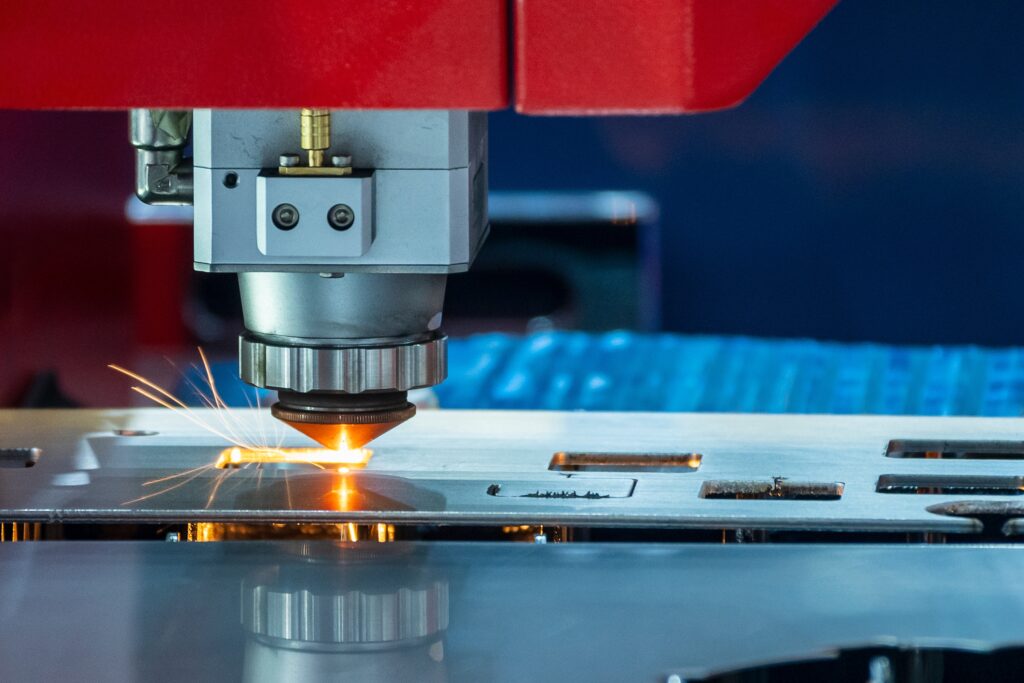If you’re researching fiber vs CO2 laser cutting, you’re not alone. These are two of the most widely used cutting methods in metal fabrication—and knowing which one is right for your project can save you time and money. Both methods use lasers to cut metal, but they work in very different ways.
At Metal Services, we use both fiber and CO₂ laser systems. In this article, we’ll break down the key differences, the pros and cons, and how to choose the right method for your parts.
What Is Laser Cutting?
Before we compare fiber vs CO2 laser cutting, let’s start with the basics. Laser cutting uses a high-powered beam of light to melt or vaporize material. It’s a fast, precise way to cut metal sheets, tubing, and components for many industries—from agriculture to fire and rescue to custom OEM work.
Now, let’s look at the two types of laser cutting.
Fiber vs CO2 Laser Cutting: Core Differences
The main difference between fiber vs CO2 laser cutting is how the laser beam is created and delivered.
- CO₂ lasers use gas to generate the beam. They’re best for thicker metals and offer smooth edge finishes.
- Fiber lasers use a solid-state system that focuses the beam through a fiber optic cable. These are best for thin metals and high-speed cutting.
Each method has its strengths depending on your material type, thickness, and part geometry.
Pros and Cons of CO₂ Laser Cutting
CO₂ lasers have been used in fabrication shops for decades. They’re a proven choice for heavy-duty cutting.
Advantages:
- Excellent for thick mild steel
- Smooth edge quality
- Can cut wood, plastics, and other non-metals
Drawbacks:
- Slower on thin metal
- Higher maintenance
- More power usage
If your project involves thick materials or mixed materials (like metal and plastic), CO₂ is often the better option.
Pros and Cons of Fiber Laser Cutting
Fiber lasers are newer but quickly becoming the industry standard for high-speed cutting and complex shapes.
Advantages:
- Faster cutting speed, especially on thin metal
- Lower power consumption
- Great for cutting reflective materials like brass or copper
- Minimal maintenance
Drawbacks:
- Not ideal for thick plate steel
- Cannot cut non-metal materials
If you’re cutting thin stainless steel or aluminum, fiber laser cutting is typically the better choice.
When to Use Fiber vs CO₂ Laser Cutting
Not sure which laser type is best for your job? Here’s a quick guide to help you decide:
-
Use CO₂ laser cutting if you need:
- Thick mild steel cut cleanly
- The smoothest possible edge on thick materials
- To cut both metal and non-metal materials (like plastic or wood)
-
Use fiber laser cutting if you need:
- Fast cuts on thin stainless steel or aluminum
- Small parts with tight details or fine features
- High-speed production for large quantities
- To cut reflective metals like brass or copper
Still unsure? We’ll help you choose the best fit based on your material, design, and deadlines.
Why Your Choice of Laser Matters
The laser method you choose affects not just the cut quality—but also lead times, secondary processing, and overall cost. Using the wrong laser could mean extra grinding, slower production, or higher scrap rates.
That’s why fiber vs CO2 laser cutting isn’t just a technical detail—it’s a business decision.
At Metal Services, we’ve handled thousands of cutting jobs for OEMs and manufacturers across the Midwest. We understand how to match the laser to your material, design, and goals. Our shop is equipped with both fiber and CO₂ lasers, and we choose the right one for every job we quote.
Get the Benefits of Both Laser Cutting Methods
You don’t need to know everything about fiber vs CO2 laser cutting—you just need the right partner. Whether you need precision cuts on thin stainless or clean edges on thick carbon steel, we’ve got the equipment and experience to deliver.
And since we also offer bending, welding, powder coating, and assembly, you can get your parts made from start to finish in one place.
Ready to get started? Request a quote or learn more about our laser cutting services.

